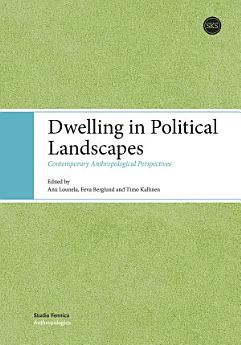Dwelling in Political Landscapes: Contemporary Anthropological Perspectives
About this ebook
Foremost through studying how socially valued landscapes become irreversibly disturbed, commodified or subjected to wilful markings or erasures, the book explores a number of approaches to how landscapes are entangled in the ways people gather and organise themselves. Mindful of troubling changes in Earth Systems, all the authors argue from empirics. They show that processes of landscape change are always both habitual and laden with choices. That is, landscape change is political. Undoubtedly, landscape politics is bound up not just in how nature has been imagined, but in long histories of consumption. Today, an alarming quest for raw materials and energy continues to change both political and geological formations. Meanwhile dominant socio-political aspirations mean the exploitation of staggering volumes of cheap resources like fossil fuels in order to sustain economic processes that are as taken-for-granted as they are unsustainable. Like anthropology generally, this book attends to the contextual details buried in such planet-scale pictures.
Building on traditional anthropological strengths, many authors consider the details of how the past is brought into the present – or erased from it – in material flows and sensory awareness, as well as in narratives that are explicitly linked to particular landscapes. Colonial identity formation and the different ways that it links with how landscape is viewed and managed (for instance for resource development for a global market), whether in Southern Africa, Israel/Palestine, the Canadian arctic or Indonesia, is a particularly striking example of how to talk about landscape is also to talk about past, present and future. And as the idea that we inhabit the Anthropocene becomes commonplace, the discipline can meaningfully discuss the current era as one of disavowed ruins as well as of poorly understood multispecies relations.
To think of landscape as historically produced across multiple scales, does not mean ignoring its sensuous qualities let alone its role in cosmological systems. On the contrary, the analyses in the collection attend to the ways people’s movements through the landscape produce it as a material and conceptual resource. Taken together, the book’s ethnographic analyses take on board the unprecedented conditions under which people everywhere are having to make sense and forge relationships to the worlds they inhabit. Since landscapes are not what they used to be, neither can anthropology be.
About the author
Anu Lounela (https://orcid.org/0000-0002-
Eeva Berglund (https://orcid.org/0000-0003-
Timo Kallinen (https://orcid.org/0000-0001-






